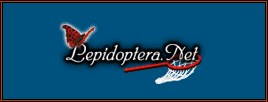|
Home-Made Professional Spreading Board
[ My Photos ] [ Studying Butterflies ] [ Reference Links ] [ Downloads ] [ About ] [ Contact ] |  | |||||||||||||||
Home-Made Professional Spreading BoardThis project is fairly simple, but it will take most of an evening to complete.
Parts List
Tools
InstructionsCut both of the 1/4" X 1/2" X 24" Strips of Basswood in half, so that you have four 12" pieces. These are the Support Strips. [PICTURE]Cut one of the 1/4" X 3" X 24" Strips of Basswood in half, so that you have two 12" pieces. These are the Surfaces. [PICTURE] Cut two 2 1/4" X 1" blocks from the other 1/4" X 3" X 24" Strip of Basswood. These are the Slide Mounts. Then drill 5/65" screw holes through both blocks as seen in the diagram. [PICTURE] The 1/4" X 1" X 12" Strip of Balsa will be the Pinning Strip. [PICTURE] Cut two 7" blocks from the 1" X 1" X 24" Square Section Pine Rod. Cut a notch in the middle of both blocks 1" wide and 1/2" deep. These blocks will be the Base Blocks. Now you must drill 1/8" holes in the faces of these blocks where the notches are. In one block, drill the hole 2 1/4" from the left end and 11/32" from the bottom. On the other, drill the hole 2 1/4" from the right end and 11/32" from the bottom. [PICTURE] Sand all of the wooden parts (except for the balsa Pinning Strip -- it is too soft). Here is the most difficult part of the project. You must cut the two Slide Brackets from the 4" X 8" Piece of 1/16" Sheet Aluminum Next drill the screw holes with a 1/8" bit. Then use a 7/32" bit to drill the holes for the slot. I used a high-speed cutting disk to cut the slot between these holes, but you might be able to do it with the tin snips if you are careful. See the diagram for cut guides and drilling spots. Sand the corners well so you won't cut yourself or snag your clotes. [PICTURE] Put both of the Base Blocks upside down on a table. The notches on both blocks should be facing each other. The drilled holes should be close to the table (not away). Put the Pinning Strip between the blocks with each end in the notch of a block. Make sure that it is flush with the table. Glue the strip in place. [PICTURE] Put one of the Surface pieces flat on a table. Glue one of the Support Strips lengthwise on top of the Surface along the edge. The 1/4" edge of the strip will be bonded to the Surface. Glue another Support Strip lengthwise on top of the Surface along the other edge. The 1/2" edge of this strip will be bonded to the Surface. Mounting the strips differently like this will cause the Surfaces to have an angle when the project is finished. Repeat these steps to assemble a second Surface piece. On this second Surface piece, glue a Slide Mount flush with each end, between the Support Strips. [PICTURE] Once the glue has dried, carefully attach the Slide Brackets to the Slide Mounts at each end of the second Surface. Be gentle driving the screws so that you don't split the wood. [PICTURE] Flip the Base Block / Pinning Strip assembly over so that the Pinning Strip is on top. Glue the first Surface (the one without the brackets) to this assembly. The surface should fit perfectly between the Pinning Strip and the edge of the assembly. [PICTURE] Place the second Surface on the assembly just like the other, but don't glue it in place. The brackets should slide past the outside of the Base Blocks. Push the two Machine Screws through the Base Blocks and through the Slide Bracket, so that the second Surface can slide in and out. Put a Washer and a Wing Nut on each Machine Screw, and tighten the nut until it is snug. (You won't be able to get it very tight, but it doesn't take much tension to keep the Surface from moving.) [PICTURE] | ||||||||||||||||












